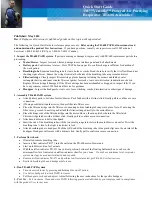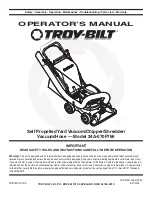
32
33
Figure A
Figure B
Figure C
Figure D
Figure E
PIPING INSTALLATION
The following pages illustrate piping diagrams, typical installations and the parts that
we recommend for an optimum performance of your central vacuum system.
GENERAL INFORMATION
• You must plan to install an air outlet leading outside for these units but make
sure that the evacuated air does not lead under a carport.
• If your unit includes two motors, it is important to use metal piping and couplings
for the air outlet.
• To determine where to locate the wall inlets, use the length of the vacuum hose as
a basis, measuring the furthest point from the wall where the wall inlets are to be
installed. Do the same for all the wall inlets until all areas of the house or building
can be reached with the vacuum hose, by moving it from one wall inlet to another;
don’t forget to install one in the garage or outside to vacuum your car.
• If your walls are made of gypsum board, never install a wall inlet in the centre of
the wall. Drill the holes for the wall inlets close to a wall stud or a door frame.
• Any screw length can be used if you install the piping as illustrated in Figure A.
If you install the piping as illustrated in Figure B, make sure to position the small
screw in the right place to avoid piercing a hole through the pipe.
• The minimum cornering pipe must be at least a medium elbow, but an 45
o
pipe is
recommended for all corners for an optimal efficiency.
• Always use a short elbow when connecting the wall inlets (Figures A and B) to
prevent long objects (for example, a pencil) that may have been vacuumed by
mistake from blocking the piping further on.
• The pipes leading upwards must be slightly higher than the main pipeline to
prevent liquids from flowing back down (Figure C).
PIPING INSTALLATION
Small screw
Short elbow
Содержание CYCLONIK DF1R11
Страница 1: ...CYCLONIK OWNER S MANUAL Central Vacuums ...
Страница 25: ...LIVR 03 PRINTED IN CANADA 05 18 Central Vacuums ...









































